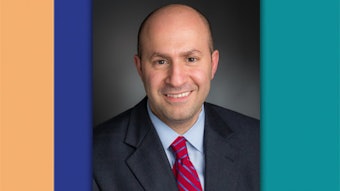Transitional care in the spina bifida patient
Clinical scenarios every urologist may encounter with adult patients who have spina bifida

Fortunately, advances in medical and surgical therapy allow most children with spina bifida to survive into adulthood. However, “adult patients with spina bifida require life-long urological care, but 60% don’t establish adult care,” said Konrad Szymanski, MD, MPH, a pediatric urologist at Riley Hospital for Children at IU Health in Indianapolis, Indiana, and moderator of Sunday’s Plenary: “Transitional Care in the Spina Bifida/Exstrophy Patient.”
The panel discussion featured clinical scenarios every urologist may encounter with adult patients who have spina bifida and cited their professional experience and the literature to provide a solid set of recommendations for managing these patients.
Patients with spina bifida can benefit from yearly, scheduled evaluations to monitor renal/bladder safety.
“During the evaluation, focus on two big buckets: safety and quality of life,” said John Stoffel, MD, professor of urology and chief of the Division of Neurourology and Pelvic Reconstruction within the University of Michigan Department of Urology. “New symptoms, such as recurrent urinary tract infections or hematuria, should prompt more frequent evaluations.”
What is the best way to monitor how patients are doing? Monitor their quality of life with questionnaires, such as the Neurogenic Bladder Symptom Score and a validated quality of life instrument: the QUAlity of Life Assessment in Spina bifida for Adults, he said.
Adolescents and adults with spina bifida are sexually active and express a desire to have children at the same rate as the general population, but many have had little to no education in this area.
“There’s a distinct lack of sexual counseling and misinformation in spina bifida patients,” said Stephanie Kielb, MD, professor of urology and the residency program director in the Department of Urology at Northwestern University Feinberg School of Medicine in Chicago. “It’s important to have discussions with patients about sexual function,” she said.
Fertility in patients with spina bifida is thought to be equivalent to the general population. Patients hoping to conceive should receive appropriate counseling. Because of an increased risk of neural tube defects in these patients, “folic acid supplementation at 4mg/day is recommended at least three months prior to and through 12 weeks of pregnancy because neural tube defects occur in the first four weeks of gestation,” Dr. Kielb said.
“Women with spina bifida, with or without reconstruction, experience higher rates of complications during pregnancy and delivery,” said Rose Khavari, MD, associate professor in the department of urology and director of research at the Center for Restorative Pelvic Medicine at Houston Methodist Hospital. “A urologist should be involved from very early pregnancy to well after delivery.”
Given a higher rate of premature labor for patients with spina bifida, an elective or scheduled cesarean section should be considered. During delivery, a high-risk obstetrician and urologist with experience in lower urinary tract reconstruction should both be available for care. With a cesarean birth, protect mesenteries and ensure no unnoticed bowel or ureteral injuries before closing.
A healthy delivery for women with spina bifida requires proper planning.
“Before the delivery date, it’s important to communicate with the maternal fetal medicine and nursing personnel in the labor and delivery suite and to ask the question: ‘Where is the most appropriate environment for this patient to deliver?’” said Hadley Wood, MD, associate professor at the Cleveland Clinic Lerner College of Medicine of Case Western Reserve University. “For patients who may need extra equipment, the operating room is often the safest choice.”
Visit AUA2021 Daily News Online for more articles.











